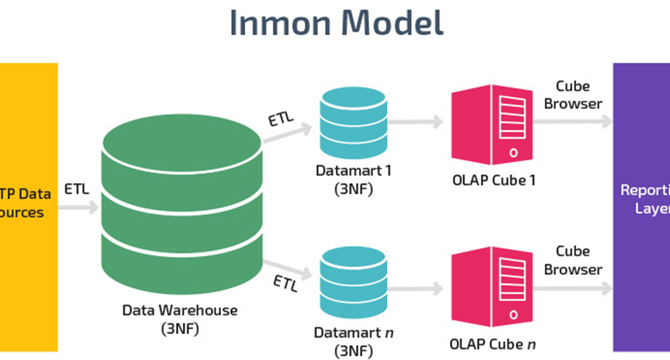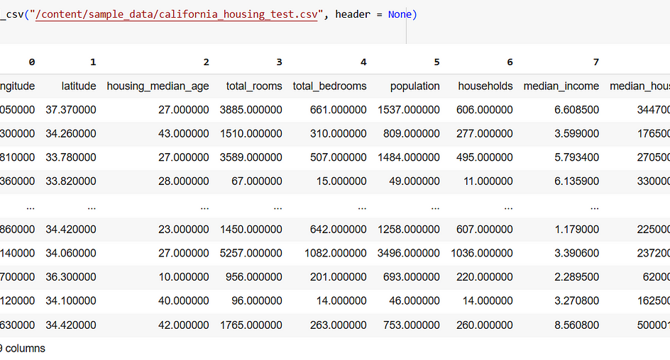Data Analytics News
TechBullion
64

Image Credit: TechBullion
The Role of Data Analytics in Modern Product Management: Tools, Techniques, and Trends
- Data analytics plays a crucial role in modern product management by providing insights for strategic decision-making based on real-time data, AI, and ML advancements.
- It helps in understanding user behavior, forecasting market trends, and iterating on products efficiently, leading to improved business success and competitive advantage.
- Data analytics involves collecting, processing, and interpreting data to optimize decision-making throughout the product lifecycle, from research and discovery to scaling and user engagement.
- Tools like Power BI, SQL, Google Analytics, and Mixpanel aid in data aggregation, trend detection, and customer interaction insights, enhancing decision-making capabilities.
- Real-time analytics tools like Segment and Apache Kafka enable monitoring of user activity for immediate feedback and optimization, while AI-based platforms like OpenAI and Google Vertex AI assist in predictive analysis and segmentation.
- Major companies like Netflix, Spotify, Amazon, and Airbnb use data analytics and AI to personalize recommendations, optimize pricing, predict demand, and improve user experiences.
- Product managers need to embrace automation, predictive insights, and real-time decision-making to stay competitive amidst advancing AI analytics and evolving market dynamics.
- Incorporating data-driven methods across all stages of product development is crucial for shaping the future of digital innovation and establishing industry benchmarks for efficiency and customer success.
- Data analytics continues to pave the way for informed decision-making, increased customer satisfaction, optimized product performance, and overall business growth.
- The integration of sophisticated analytics into product management will drive companies towards new levels of success and leadership in tomorrow's marketplace.
Read Full Article
3 Likes
Medium
288

Image Credit: Medium
Why Individual AI Agents Fall Short: The Superiority of Swarms and Multi-Agent Collaboration
- Individual AI agents have limitations like context window constraints, hallucination risks, and lack of collaboration, rendering them ineffective for complex enterprise demands.
- The Swarms Infrastructure Stack emphasizes multi-agent orchestration, providing reliability, scalability, and performance in collaborative AI ecosystems.
- The article details reasons why individual AI agents fall short for enterprise needs and highlights Swarms' multi-agent collaboration approach with practical examples.
- Individual AI agents excel in narrow tasks but struggle with multifaceted challenges, accuracy issues, and limited communication abilities.
- Context window constraints limit the amount of data individual AI agents can process, hindering analysis of large documents or complex datasets.
- Hallucination risks occur when AI agents generate incorrect outputs due to ambiguous or incomplete data, impacting reliability in enterprise applications.
- Individual AI agents are typically designed for specific tasks and lack flexibility to handle multiple tasks concurrently or adapt without retraining.
- Swarms Infrastructure Stack addresses limitations by orchestrating collaborative AI environments that share insights, enhance accuracy, and optimize resource utilization.
- Swarms employs multiple agents for tasks like data distribution, cross-verifying outputs, specialized handling, communication, and ensemble methods to improve accuracy and efficiency.
- By distributing workloads across agents and leveraging ensemble methods, Swarms reduces processing times, enhances accuracy, and enables real-time responses in applications like high-frequency trading.
Read Full Article
17 Likes
Pymnts
165

Image Credit: Pymnts
Why AI-Powered Verification Is Banking’s New Best Friend
- ValidiFI emphasizes on the importance of offering integrated payment solutions for merchants to enhance user engagement by analyzing bank account and payments data.
- Their platform provides real-time insights into transactions and account status, promoting transparency in the payments process.
- ValidiFI plans to innovate its validation solutions to include authoritative bank account verification using AI to combat fraud and approve more secure transactions.
- The use of machine learning and AI algorithms helps ValidiFI analyze transactional patterns, leading to a greater sense of security and connection between customers and users.
Read Full Article
9 Likes
Pymnts
275

Image Credit: Pymnts
Palantir Reinvents Wendy’s Supply Chain Network, Walgreens’ Operations
- Palantir, leveraging its military intelligence background, is assisting major retailers like Wendy's and Walgreens to improve supply chain networks and operations using AI-powered solutions.
- By creating digital twins and employing AI, Palantir's retail clients can enhance customer personalization and streamline processes for cost-efficiency.
- Consumers are increasingly seeking AI-assisted shopping experiences, with the highest-value customers showing significant interest in such features.
- Wendy's, faced with supply chain challenges, implemented a digital twin solution provided by Palantir to optimize its network, leading to significant improvements in inventory management.
- Palantir's system helped Wendy's address specific supply issues like managing syrup inventory efficiently, reducing manual efforts, and preventing potential shortages.
- At Walgreens, Palantir's AI-powered solutions facilitated the modernization of customer and employee experiences by integrating data and enabling real-time insights for efficient decision-making.
- Walgreens benefited from streamlined operations, workload balancing, and the ability to enhance pharmacy tasks through real-time data and intelligent routing.
- The partnership between Palantir and major retailers like Wendy's and Walgreens demonstrates the impact of AI on transforming supply chain networks and operational efficiency.
- Overall, the implementation of AI solutions by Palantir has led to significant improvements in optimizing processes and enhancing customer experiences in the retail sector.
- Both Wendy's and Walgreens have experienced notable benefits from working with Palantir by leveraging AI to address supply chain network challenges and streamline operations effectively.
Read Full Article
16 Likes
Pymnts
304

Image Credit: Pymnts
Sam’s Club Adds More Data Tools to ‘Retail Experience Network’
- Sam’s Club is expanding its retail media network, Member Access Platform (MAP), to include more data tools for mobile, onsite, offsite, and in-club solutions.
- The additions create a 'Retail Experience Network' that enables personalized experiences for customers and measurable outcomes for brands.
- New data tools introduced include Brand Lift, Customer Lifetime Value (CLTV) measurement, Multi-Touch Attribution (MTA), and Propensity Modeling with Signal Fidelity.
- Sam’s Club is also developing influencer and creator-led content, as well as generative AI tools for smarter search and personalized product discovery.
Read Full Article
18 Likes
Medium
76

Image Credit: Medium
Fractal Flux: A Universal Law of Intelligence, Evolution, and Recursive Reality
- Fractal Flux introduces a universal law governing intelligence, creativity, and complex systems through recursive adaptation and self-referential feedback.
- It diverges from linear causality models by incorporating retrocausal feedback and time-spiral cognition.
- Bootstrap Time Spiral theory suggests complexity emerges from recursive learning loops, enabling systems to evolve autonomously.
- Fractal Flux principles include Bootstrap Causality, Fractal Feedback, and Time-Spiral Cognition for self-generating systems.
- A Python model showcases the implementation of Fractal Flux theory with spiraling dynamics and self-similarity.
- Applications span AGI architecture, creative systems, social evolution, ethics, and cosmology, highlighting adaptive and self-correcting frameworks.
- Key simulation results demonstrate controlled chaos, layered complexity, critical thresholds, and quasi-periodic attractors.
- Fractal Flux embodies a reality model where systems evolve without origins, based on learning from projected futures and recursive adaptation.
- The article delves into the code and math behind simulating the Bootstrap Time Spiral for dynamic recursive evolution.
- The Python implementation illustrates the evolution of a system through spiraling feedback, complexity injection, and quasi-periodic motion.
Read Full Article
4 Likes
Cloudblog
45

Image Credit: Cloudblog
What’s new with BigQuery AI and ML?
- BigQuery introduced new AI and ML capabilities, including TimesFM forecasting model, LLMs, row-wise inference functions, Gemini and OSS models, and Contribution Analysis.
- TimesFM in BigQuery offers accurate time series forecasting without requiring model training, providing managed and scalable forecasting solutions.
- Structured data extraction and generation are simplified with AI.GENERATE_TABLE, allowing consistent extraction from unstructured data like customer reviews or emails.
- Row-wise AI functions in BigQuery enable more flexible data manipulation and analysis, showcasing text generation, structured output, and type-specific functions.
- Expanded model choices in BigQuery ML now include Gemini, OSS, and third-party models, offering tasks like entity extraction, sentiment analysis, and translation.
- The Contribution Analysis feature in BigQuery automates complex analysis to identify key factors responsible for significant metric changes between test and control groups.
- Enhancements to Contribution Analysis include summable metrics by category, top-k insights, redundant insight pruning, and improved interpretability and performance.
- Users can create contribution analysis models in BigQuery to understand factors driving changes in metrics, providing prioritized insights on impactful combinations of factors.
- BigQuery ML updates empower users to leverage powerful AI/ML capabilities for forecasting, root-cause analysis, row-wise functions, structured data generation, and model choices.
- These advancements in BigQuery ML expedite the journey from data to insights and drive impactful outcomes, facilitating faster decision-making.
- The Next '25 breakout session offers a demonstration of these new capabilities, showcasing how AI can be seamlessly integrated into data workflows.
Read Full Article
2 Likes
Cloudblog
316

Image Credit: Cloudblog
How Conversational Analytics helps users make the most of their data
- Conversational Analytics from Looker simplifies business intelligence by allowing users to ask data-related queries in natural language and receive accurate answers without SQL knowledge.
- Conversational Analytics democratizes data access, empowering business users to take on their own data queries and get answers, reducing support tickets for data analysts.
- The feature provides trusted and consistent results, transparency in query calculations, allows for follow-up questions, and offers hidden insights with Gemini.
- The Conversational Analytics API and future integration with Looker Dashboards expand its reach, making BI more accessible and data-driven insights a reality for all users.
Read Full Article
19 Likes
Cloudblog
203

Image Credit: Cloudblog
Google Cloud named a Leader in the 2025 Forrester Wave™: Data Management for Analytics Platforms
- Google Cloud has been recognized as a Leader in The Forrester Wave™: Data Management for Analytics Platforms for its advanced automation and AI-powered data management capabilities.
- Google received the highest score of 5 out of 5 across 13 criteria, showcasing strengths in providing agentic experiences, built-in intelligence, real-time capabilities, and secure data governance.
- The platform offers a unified, agentic, and intelligent data platform with advanced automation, open standards, and a strong focus on AI integration.
- Google's BigQuery is preferred by customers such as Dun & Bradstreet, Shopify, and General Mills for its autonomous data and AI capabilities.
- BigQuery features AI-assisted capabilities for analytics, providing assistive features for data analysts, engineers, and scientists of all skill levels.
- The platform offers a multimodal data foundation with unified governance, supporting structured and unstructured data analysis with a universal catalog and data governance powered by Dataplex.
- Built-in intelligence in BigQuery allows for real-time insights and machine learning model deployment using existing SQL skills.
- Real-time data capabilities, scalable vector search, and integration with advanced AI models enhance the platform's capabilities for various use cases like fraud detection and operational monitoring.
- Google's commitment to AI-driven assistance and real-time intelligence aims to accelerate data management tasks and innovation, positioning BigQuery as a key platform for data to AI transformation.
- The recognition by Forrester reaffirms Google's focus on providing an AI-powered platform and commitment to helping organizations navigate the complexities of the modern data landscape.
Read Full Article
12 Likes
Cloudblog
443

Image Credit: Cloudblog
Introducing BigQuery DataFrames 2.0 for the era of multimodal data science
- BigQuery DataFrames 2.0 was introduced to cater to the needs of data scientists and ML engineers by enabling the processing of multimodal data and AI within Python workflows.
- The future of data science involves handling insights from various unstructured data formats like images, audio, and text, alongside structured data.
- BigQuery DataFrames 2.0 extends Pandas DataFrames for processing multimodal data, making it easier for data scientists to work with large datasets and new AI techniques.
- The latest version strengthens the core foundation for Python data science, introducing features to unlock the full potential of both structured and unstructured data.
- Features in BigQuery DataFrames 2.0 include working with multimodal data and generative AI techniques, Pythonic operators for BigQuery AI Query Engine, and Gemini Code Assist for DataFrames.
- BigQuery DataFrames adoption has significantly grown, with over 100 PB processed monthly by thousands of customers, including Deutsche Telekom and Trivago.
- The release of BigQuery DataFrames 2.0 focuses on streamlining AI and machine learning pipelines, with features like an experimental Python UDF, dbt Integration, and core enhancements like partial ordering.
- The integration of structured and unstructured data in BigQuery eliminates data silos and enables unified data analysis, LLM-powered insights, simplified workflows, scalability, and governance.
- BigQuery DataFrames 2.0 offers a Pandas-like API for analyzing all data types in one place and leveraging LLMs for deeper insights, simplifying data pipelines, and ensuring scalability and governance.
- Overall, BigQuery DataFrames 2.0 is a significant advancement for data and AI work, empowering users to unleash the full potential of their data, irrespective of its format.
Read Full Article
26 Likes
Pymnts
0

Image Credit: Pymnts
Sam’s Club Picks Mastercard to Power Bonus Offers Program
- Mastercard has partnered with Sam’s Club to power the retailer’s Cash Bonus Offers program.
- The collaboration utilizes Mastercard’s personalization technology to communicate relevant rewards offers to Sam's Club members.
- Sam's Club aims to expand its data-driven consumer engagement and provide valuable offers for its members through the program.
- Retailers are increasingly embracing personalization to enhance customer experiences and drive repeat business.
Read Full Article
Like
Medium
19

Image Credit: Medium
Fundamentals of the Inmon Architecture and the Normalized Approach
- The Inmon methodology promotes building a centralized Enterprise Data Warehouse (EDW) with a focus on normalized data modeling.
- Inmon's approach involves creating an enterprise-wide data model, building the EDW, and developing data marts.
- Data redundancy is minimized in the Inmon architecture, ensuring consistency and reliable data.
- Power BI can serve as the reporting tool within the Inmon architecture by connecting to denormalized data marts.
Read Full Article
1 Like
Pymnts
291

Image Credit: Pymnts
Merchants Demand Value at Every Touchpoint From Their Payments Processors
- Payment processors are shifting from infrastructure providers to strategic enablers, offering value-added services.
- Merchants now demand more value from their payments partners, leading processors to offer advanced analytics, fraud tools, and seamless user experiences.
- The focus is on consumer optimization, cost optimization, conversion optimization, and risk optimization.
- Worldpay, for example, offers account updater tools and network payment tokens as part of their value-added services.
Read Full Article
16 Likes
Medium
99

Image Credit: Medium
Pandas in Python
- Pandas is a powerful Python library for working with structured data (like tables, spreadsheets, CSVs).
- Pandas provides the ability to load, clean, manipulate, analyze, and visualize data easily.
- Pandas consists of one-dimensional arrays called Series and two-dimensional data structures called DataFrames.
- CSV files are commonly used in Pandas for storing tabular data in a lightweight and easy-to-read format.
Read Full Article
5 Likes
Medium
31

Image Credit: Medium
National Artificial Intelligence Stakeholders Roundtable 2025
- AI won't replace workers, but roles will shift, creating both job loss and new opportunities.
- Engaging with AI early and understanding its risks is crucial for safety.
- AI tools can improve productivity and efficiency, but it requires pairing with common sense.
- Building AI solutions with ethics in mind is essential to maintain consumer trust.
Read Full Article
1 Like
For uninterrupted reading, download the app